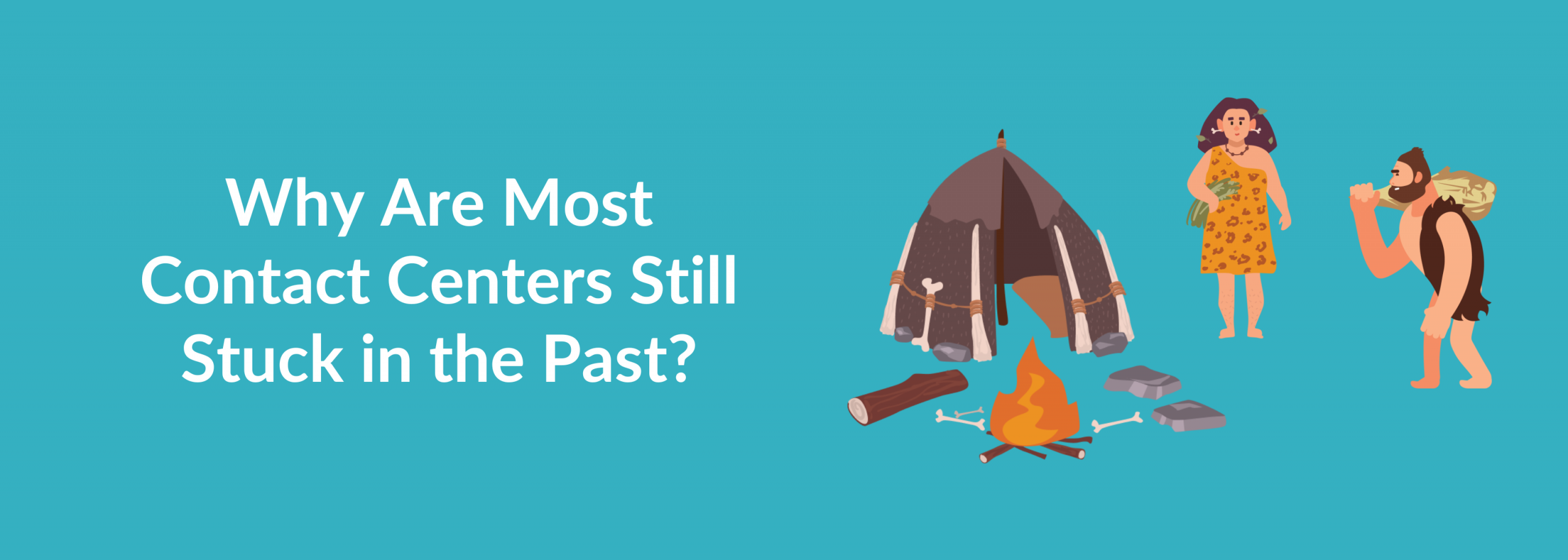Why Most Contact Centers Are Still Stuck in the Past and Losing Customers Because of It?
Do you know that only 31% of contact centers have successfully implemented omnichannel capabilities that unify interactions across all channels and interfaces?
Is it a big gap?
I’d say that it is a gaping hole that contact centers need to fix.
I have an even more troubling statistic when it comes to empowering your agents.
Would you believe that only 12% of contact center leaders believe they have the technology to give their agents a 360-degree view of the customer?
Despite huge investments and high expectations, most contact centers fail due to the lack of omnichannel customer experience capabilities. Without omnichannel, your data doesn’t flow, context gets lost, and customer experience suffers.
Why Are Contact Centers Failing to Deliver?
Your Customers Don’t Think in Channels
Step 1: Your customer starts a complaint on Twitter.
Step 2: The customer then emails your support team.
Step 3: The customer finally calls your customer support team.
Your agent on the line asks the customer, “Can you explain the issue, please?”
Your agent does not have the context because he does not have access to customer interactions across all the channels.
Would it be frustrating for your customer?
It definitely would be.
Today’s customers expect you to understand the context and provide them with a solution irrespective of the channel through which they try to reach you.
If your systems don’t talk to each other, your people can’t either.
Your Data Is Siloed
What are the customer data sources in your organization?
- Customer relationship management (CRM) systems
- Ticketing and helpdesk systems
- Social channels
- Call recordings
All of these remain in different islands.
Where does that put your agents?
They are stuck trying to swim between them.
This is the reason why you face the following issues in your contact center?
- Repetitive questions
- Incomplete resolution
- Higher handle times
- Poor CSAT scores
Your Contact Center Is Viewed as a Cost Center
Most organizations still see the contact center as a helpdesk and not as a strategic part of the customer journey.
So, they optimize for speed and not engagement or experience.
But speed without context isn’t customer experience.
Why Is Omnichannel No Longer Optional?
Let me give you five reasons to experience the true magic of omnichannel contact center platform.
- A customer starts on chat, moves to email, and ends the conversation on a call. All of these without having to repeat a single word. With omnichannel platform , you can get this seamless channel switching right.
- When your agent picks up the call, his screen is populated with the customer’s past interactions, preferences, and, most likely, their mood. There is no digging and no awkward silence. Your agents get to have a 360-degree view of your customer interactions.
- Your contact center system routes a complaint straight to a senior agent. It was not because it was loud but because the tone was urgent. How smart. It can be based on urgency, behavior, or channel.
- It doesn’t matter what touchpoint the customer uses – website, email, chat, chatbot, social, mobile, or voice, it feels like one brand and one voice. You get to have a consistent tone and brand experience everywhere.
- The biggest stress for agents is the need for them to switch between multiple screens and tabs before they can resolve a customer issue. With omnichannel, your agents get everything they need in one place, which allows them to focus on helping and not hunting for information.
With omnichannel, you are moving from a firefighting function into a proactive loyalty engine.
How Do You Get Omnichannel Right?
Let us break this down into a four-step process for easy understanding.
Step 1: Map the Customer Journey
This is the starting point of your omnichannel experiences.
Before you decide on the technology, understand how your customers interact with you.
- What channels do they prefer?
- Where do they start?
- When do they switch channels?
- What frustrates them?
You should conduct a customer journey mapping workshop to uncover pain points and context loss. This would allow you to design your omnichannel experience optimally.
Step 2: Integrate, Don’t Just Add Channels
Most organizations keep adding channels like chatbots, WhatsApp, and social without unifying the backend.
What do you call this?
This is multichannel and not omnichannel.
Omnichannel is not just about integrating the existing channels but also integrates the contact center platform with internal CRM, helpdesk, ticketing, and other best-of-breed IT systems.
With this, you would get a 360-degree view of all your customer interactions, along with context and intelligence.
Step 3: Empower Your Agents, Not Just the Bot
Bots are great for FAQs and knowledge bases. You need to empower your agents to handle complex and emotional issues.
Equip your agents with:
- Conversation history across channels and interfaces
- Customer profile and purchase data
- Sentiment analytics
- Next best action recommendations
This would allow your agents to deliver empathy and efficiency.
Step 4: Track Experience, Not Just Metrics
Start measuring:
- Channel switching frequency
- Customer effort score (CES)
- Sentiment changes during conversations
This will tell you whether your omnichannel is working for your customers.
Check out our blog on : How BFSI Contact Centers Are Using Omnichannel Capabilities to Enhance Their CSAT?
Omnichannel is not about throwing in a few additional channels and calling it transformation. It is about integrating systems and channels, preserving the context, and empowering your agents.
If your agents don’t know who the customer is, what they have been through, or what they need next, you will lose the trust of your customers.
With omnichannel, you can fix that.
